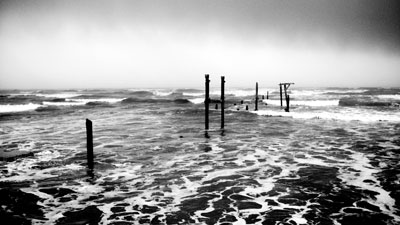All Nonfiction
- Bullying
- Books
- Academic
- Author Interviews
- Celebrity interviews
- College Articles
- College Essays
- Educator of the Year
- Heroes
- Interviews
- Memoir
- Personal Experience
- Sports
- Travel & Culture
All Opinions
- Bullying
- Current Events / Politics
- Discrimination
- Drugs / Alcohol / Smoking
- Entertainment / Celebrities
- Environment
- Love / Relationships
- Movies / Music / TV
- Pop Culture / Trends
- School / College
- Social Issues / Civics
- Spirituality / Religion
- Sports / Hobbies
All Hot Topics
- Bullying
- Community Service
- Environment
- Health
- Letters to the Editor
- Pride & Prejudice
- What Matters
- Back
Summer Guide
- Program Links
- Program Reviews
- Back
College Guide
- College Links
- College Reviews
- College Essays
- College Articles
- Back
Sea the Problem
Each year, about 7 million tons of trash is found in the ocean. This trash consist of cigarette filters, medical waste, plastic, mile long nets, etc.. Those items of trash entangle or choke many species of marine life, that eventually become extinct. Ocean pollution harms the earth and animals, and we should stop the problem.
Some other causes of ocean pollution are sewage, toxic chemicals, land runoff, oil spills, ocean mining, and the biggest cause, littering. How do these items end up in the ocean? Sewage flows through rivers and drains, directly to the ocean, and when you dump toxic liquids into water, it infiltrates the soil. Then, excess water from the rain flows over land and into the ocean. Silver is a popular mineral to mine for in the ocean, but this creates sulfide deposits 3.5 thousand meters down. Silver is used for jewelry, silverware, coins, mirrors, batteries, etc.
Ocean pollution continues to escalate. The estimated amount of ocean pollution that floated in the sea in 2012, was 288 million tons of ocean pollution. This huge number continues to increase by 4% each year. That means 11,520,000 tons of trash increase each year. Imagine the future of your ocean. Will there be any room to swim?
Out of the entire ocean, most of the trash ends in one place; the Great Pacific Garbage Patch. According to Charles Moore the patch consist of 3.5 million tons of trash, and is filled with light bulbs, styrofoam cups, bottle caps, popsicle sticks, cans, fishing gear, and nets. Also 80% of the Great Pacific Garbage Patch is comprised of plastic: plastic bottles, plastic bags, plastic caps, and some plastic toys. One way I suggest we reduce plastic is drinking out of reusable jugs or water bottles.
In the article Ocean Pollutions, Rinkesh states that the causes of ocean pollution affect the Earth, too. When the sewage contaminates the water, it decays the plant life. This has a severe decline in the quality of sea water. Also when toxic chemicals fill the ocean, they raise the water temperature, which some species of marine life can not live in. Land runoff creates dead zones and noise pollution throws off the balance of life. While ocean mining increase the toxicity of the lowest levels of the ocean. The actions we make, have an effect on all the things around us.
Rinkesh also believes that oil spills prevent sunlight from reaching the marine plants, which affects the process of photosynthesis, and results in oxygen levels decrease. Also, if an animal inhales of comes in reach of toxic chemicals, they become intoxicated. If a human catches the fish, then eats it, it can cause cancer, birth defects, or long term health problems. This problem affects the whole food chain.
Some people argue that ocean pollution is not a problem and think throwing trash into the ocean is easier than walking to a trash can. What? To them I say open your eyes and inknowledge the ocean around you. Be mindful. Our actions hurt our environment.
The Worldwatch Institute states at least 267 species of marine wildlife are known to have suffered from entanglement or ingestion of trash in the ocean. In other words, the Worldwatch Institute believes trash consist of cigarette filters, lighters, medical waste, and plastic bags and bottles hurt turtles, birds, dolphins, sharks,fish, etc. This means ocean pollution affects animals, too
According to nature, plastic weaves its way through the food chain killing marine life. When fish eat plankton, their really eating small plastic particles in the water. The particles accumulate, which creates a high level of toxic chemicals in their tissues. When other fish eat the toxicated fish, the new fish now absorb the toxic chemicals. In this case, plastic is poison and killing millions of of sea life. Not only sea life but human lives too. When we eat seafood, it had a risk of the fish being contaminated, making ocean pollution a risk to humans as well.
How can ocean pollution be resolved? Use fabric bags instead of plastic bags. This would reduce our plastic situation in the ocean. We could also position landfills so that trash doesn’t fall into the ocean. Also for the sewage problem, we could recycle sewage sludge. Lastly implementing renewable energy sources such as wind power or solar power would limit offshore drilling.
If we don't stop the causes of ocean pollution, water temperatures will continue to rise and marine life will become endangered. Please be mindful that what we do affects the people around us, the animals around us, and the habitats around us. So will you pay attention to this problem of wait for the next generation to?

Similar Articles
JOIN THE DISCUSSION
This article has 19 comments.
want free v-buck
it is cool

In science class we watched a video about ocean pollution and how it affects the environment around us. This video opened my eyes to how ocean pollution, such as plastic and medical watse, can affect so many things.